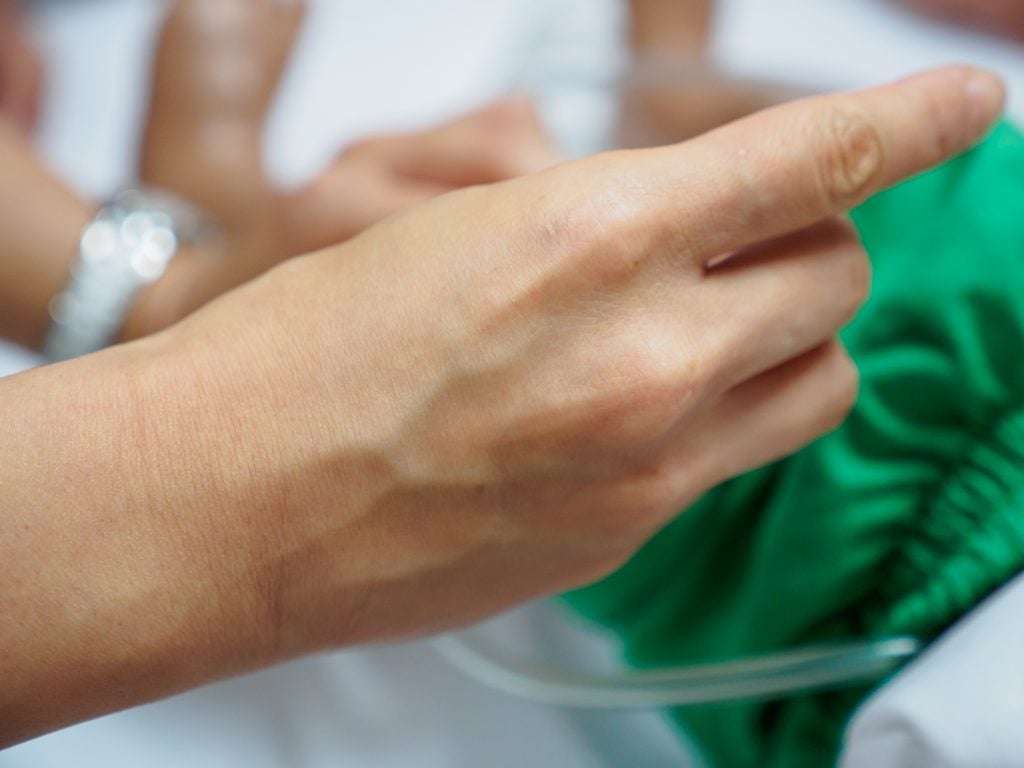The Benefits of Intravesical Therapy
- Intravesical therapy involves injecting medicine directly into the bladder to kill any remaining cancer cells. The treatment is most often used after surgery, but it can also be used in place of surgery if the cancer is non-invasive or minimally invasive.
- This treatment minimizes side effects, because the medicine is delivered right to the bladder, and therefore doesn’t circulate throughout the body.
- Some side effects may include a burning sensation during urination, the need to urinate frequently, discovering blood in your urine, fever, chills, and other flu-like symptoms (BCG), and fatigue.
Sometimes IVT can be used in place of surgery for cancers that are non-invasive (stage 0), or minimally invasive (stage I).
Read MoreProcedure
Anesthetic gel is applied to the urethral area to numb the area. A catheter is inserted into the urethra and pushed upward gently to reach the bladder. The catheter is then used to administer liquid treatment directly to the bladder. You will be instructed to avoid urination for several hours, to allow the treatment to have optimal effect.What are the types of IVT?
Bacillius Calmette-Guerin (BCG)
Bacillus Calmette-Guerin, or BCG is the most common form of IVT. BCG is a living but weakened form of bacteria related to tuberculosis (TB). It is used in some parts of the world as a vaccine against TB. You may be wondering why a vaccine against TB has anything to do with bladder cancer. It turns out that BCG activates your immune cells in the bladder, signaling them to attack cancer cells. It also sends signals to the cancer cells directly, causing them to auto-destruct. The full mechanism of BCG in fighting cancer is still the subject of much research. Yet it remains one of the most frequently used and effective forms of IVT.It is typically given weekly in the beginning of treatment, and then at a longer interval for maintenance therapy. Cystoscopy will be performed during the treatment course to check the progress of BCG treatments. Side effects include urinary frequency and burning, and sometimes blood in the urine. Flu-like symptoms such as fevers and chills are also common for the first few days, due to your immune system being activated.

In patients with early-stage bladder cancer who had transurethral resection of bladder tumor (TURBT), those who had BCG afterwards had a better progression free survival. Also, the survival outcomes of patients who had TURBT plus BCG was the same as those who had their bladder removed entirely. Thus, BCG has become standard of care, and has helped many patients keep their bladder and normal urinary function.
Because BCG is a live bacteria, there is a possible but uncommon risk of infection. Infections can occur months to even years after receiving therapy. Symptoms of a systemic infection include fevers, chills, weight loss, fatigue, shortness of breath, cough, bone or muscle pain. To reduce this risk, BCG is not given to patients who still have symptoms of inflammation or bleeding after their surgery. It is also not given to patients who are immunocompromised from other conditions such as HIV, or from medications they may be taking, such as certain drugs for rheumatoid arthritis and other conditions. You will review all of your medications with your doctor before starting BCG.
Mitmocyin
Mitomycin is a chemotherapy that works by altering the DNA of cells in the bladder, including cancer cells. Like BCG, it can be used as a single dose immediately after surgery for low risk non-muscle invasive bladder cancer. For patients that have more than one bladder tumor, or have disease that has recurred, additional treatments of mitomycin may be recommended. Since it is only minimally absorbed in the rest of the body, side effects are limited. However, local inflammation of the bladder, known as cystitis, can occur. Additionally, some patients may experience a rash, which is a type of allergy that can be treated.
Gemcitabine
Gemcitabine is a chemotherapy that has been shown to work just as well as mitomycin, with potentially fewer side effects. Research has shown that patients who received a one-time dose after bladder surgery for low grade non-muscle invasive bladder cancer had a 34% decreased chance of the cancer coming back, compared to patients who did not receive the drug.
In some cases, combinations of treatments or other drugs can be delivered as IVT. Your doctor will review your history, risk factors, and other conditions before deciding on the best treatment plan.
Side effects of IVT
The most common side effects are as follows:
-Burning when you urinate.
-Feeling like you need to urinate frequently
-Blood in urine
-Fever, chills, and other flu-like symptoms (BCG)
-Feeling tired
These symptoms usually resolve within 48 hours of receiving IVT. In rare cases, BCG can spread through the body to cause an infection similar to tuberculosis. Symptoms that persist or interfere with your daily activities should be discussed immediately with your doctor.
Learn more about SurvivorNet's rigorous medical review process.

